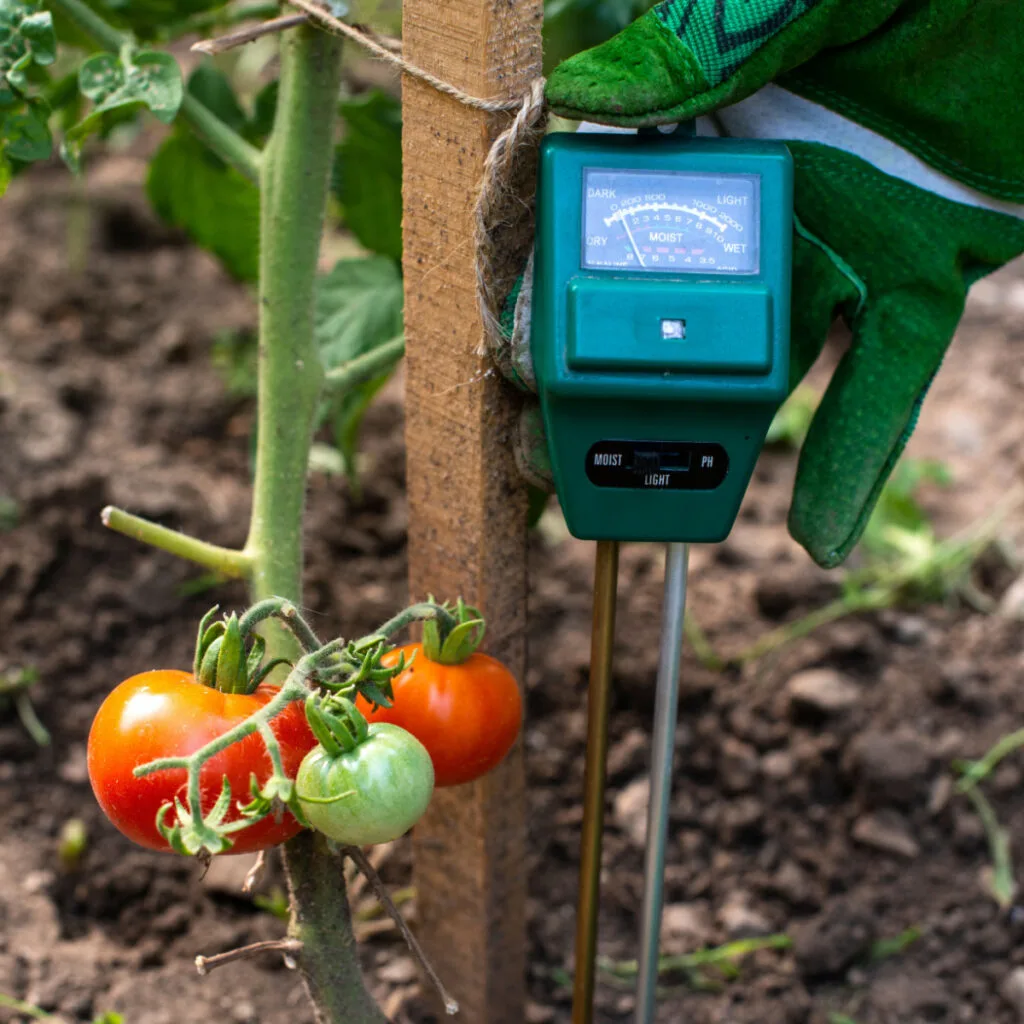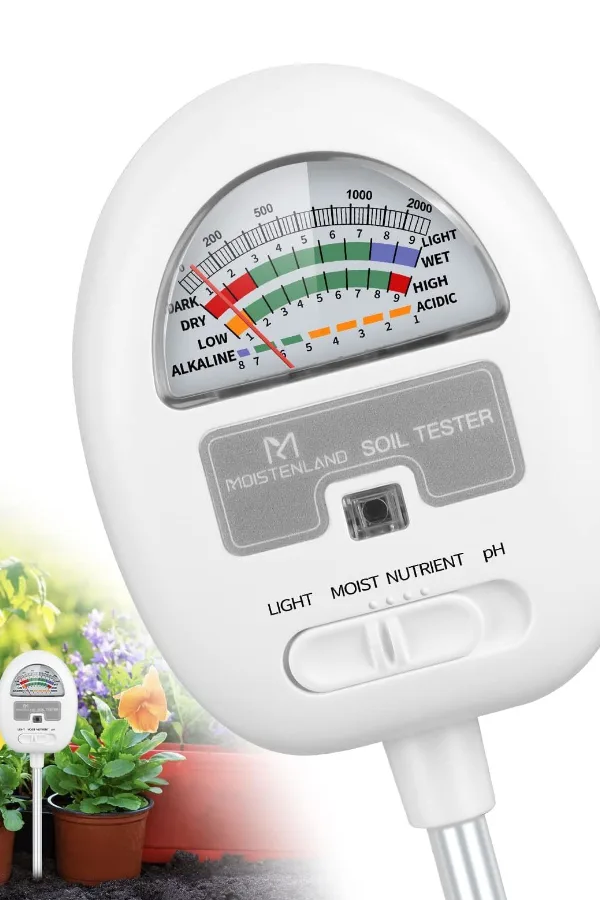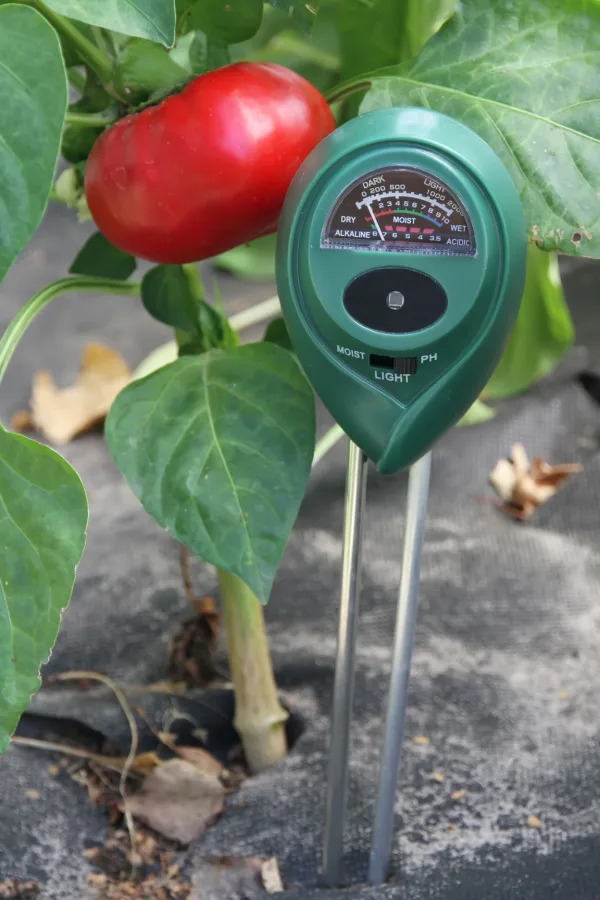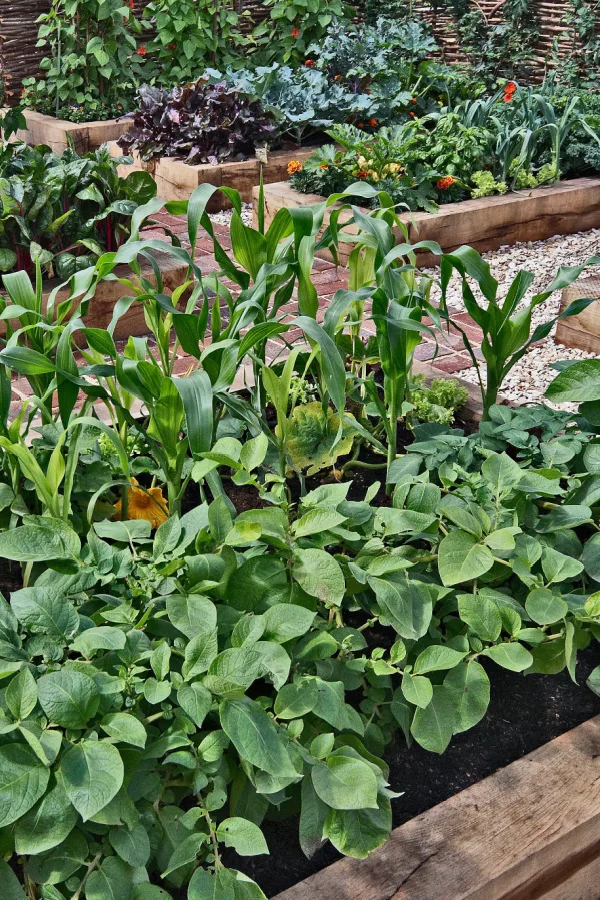One of the best ways of all to take the guesswork out of how to know when to water your vegetable and flower plants is by using a simple, inexpensive moisture meter. In fact, once you own one of these amazing little tools, you will wonder how you ever lived without it!
Giving plants the correct amount of water might seem like a simple concept, but it can actually be rather challenging. Too much water and the plants can quickly become waterlogged. Not only can overly wet roots begin to rot, they also swell and are unable to take in nutrients from the soil.
But if your plants fail to get enough water, trouble looms as well. When the soil at the root level of plants dries out for too long, the roots begin to shrivel up. And when that happens, once again they are unable to absorb nutrients from the soil.

How Do You Really Know When To Water
One thing is for sure – you can’t gauge the moisture level by simply looking at the soil. What might appear as dry and cracked soil on the top inch or two could actually be teeming with moisture 4 to 6 inches below the surface.
On the other hand, you may look at the soil surface and it appears to have enough moisture. But, down at the root level, it could still be completely dry, leaving the plant without the moisture it needs to survive.
While you can attempt to check the moisture levels by using your finger or even a wooden stick, the results are up to interpretation and can often be misleading. Does it really feel moist? Is there dirt sticking to the wooden stick? To be sure, these two methods are certainly not a 100% accurate reading – and that is where a moisture meter can be a lifesaver!
A moisture meter takes all the guesswork out of watering your garden vegetables and annual flowers so you know exactly when and how much water to give each and every plant. And best of all, they are simple and easy to use!

What Is A Moisture Meter?
A soil moisture meter is a simple gardening tool that features a meter at the top and one or two long metal probes at the bottom. These probes can detect the percentage of moisture within the surrounding soil.
When you place the probe deep in the soil, it gives a readout on the meter of how much moisture is in the soil. Most do not require batteries and only take seconds to give an accurate reading.
You can purchase moisture meters from many online retailers and garden centers, and usually for less than $20. Some even come with additional features – like the ability to test the soil’s pH levels and the amount of light a specific location receives, giving you even more bang for your buck. Affiliate Product Link: Soil Moisture Meter 4 In 1 Tester

Using A Soil Moisture Meter
Using a soil probe meter is simple and easy. Most meters come with a probe or probes that you push into the soil at least 4 to 6 inches. The length, of course, will vary depending on the model you use, but it is best to have a four inch probe at minimum.
Place the probe a few inches away from the stem of the plant. This will help to keep from damaging any roots right near the plant. If you are met with resistance when pushing the probe down, simply try a different spot in the soil.
Each meter will be a bit different, but most will have a color-coded scale or chart that will tell you immediately what the soil moisture level is. Wipe the probe off each time when measuring multiple plants.
Interpreting Results
Keep in mind that even though the results might show “dry” on the scale i doesn’t always mean it’s immediately time to water the plant. You need to know the plant’s watering requirements in order to avoid over or underwatering.

For example, desert plants like cacti and succulents need soil to dry out in between waterings. You shouldn’t water them at the first sign of dry soil or they will start to suffer. Flowering annuals in containers and hanging baskets however should always have some moisture, and if it reads dry on the meter, it is definitely time to water!
To help more with this task, we have included below some of the more common vegetable and annual plants and their watering requirements:
Common Plants’ Moisture Needs – How To Use A Moisture Meter
Beans and Peas – Around 1 inch of water weekly; Moisture levels between 40-80%.
Brassicas (broccoli, cabbage, cauliflower) – 1 to 2 inches of water weekly; Moisture levels between 40-80%.
Corn – 1.5-2.5 inches of water weekly; Moisture levels between 40-80%.
Cucurbits (cantaloupe, cucumbers, pumpkins, squash, watermelon) – 1 to 2 inches of water weekly; Moisture levels between 40-80%.
Garlic and Onions – Around 1 inch of water weekly; Moisture levels between 40-80%.
Leafy Greens (celery, kale, lettuce, spinach) – 1 to 2 inches of water weekly; Moisture levels between 40-80%.
Nightshades (eggplant, peppers, tomatoes) – 1 to 2 inches of water weekly; Moisture levels between 40-80%.
Root Crops (beets, carrots, potatoes, radishes) – 1 to 2 inches of water weekly; Moisture levels between 40-80%.
Asters, Marigolds, Petunias, Poppy – Around 1 inch of water weekly; Moisture levels between 20-40%.
Coneflower, Lavender – Around 1 inch of water weekly until established; Moisture levels between 20-40%.
Astilbe, Bleeding Heart, Hellebores – Around 1 inch of water weekly; Moisture levels between 40-60%.
Dahlias, Pansies – Around 1 inch of water weekly; Moisture levels between 20-60%
Things To Consider
Keep in mind that young plants will need more frequent water. They will have shallow roots to start, and the soil up top will dry out faster. As plants mature and fruit or flower, they will require more water at a deeper level.

Also note that as the air temperature rises, so will water evaporation off of plants. Plants will also take up more water in an attempt to cool themselves. Adding mulch can help reduce the amount of evaporation that occurs. (See: “The 3 Biggest Mistakes Made When Mulching Vegetable Plants“)
Lastly, keep in mind the type of soil your plants are growing in. Clay soils will be able to retain moisture for longer than soils that are sandy in composition.
By using a soil moisture meter this growing season, you will immediately know whether or not your garden vegetables or annual flowers need to be watered – or whether they need to be left alone for a few more days!
Follow Our Facebook Page For Even More Great Tips! Simple Garden Life Facebook Page
Simple Garden Life is a website dedicated to keeping gardening fun, simple and enjoyable! We publish two new articles each week along with a new garden podcast episode every two weeks. This article may contain affiliate links.
